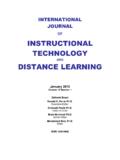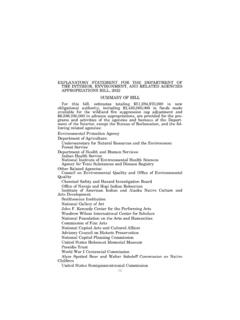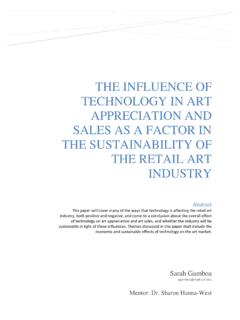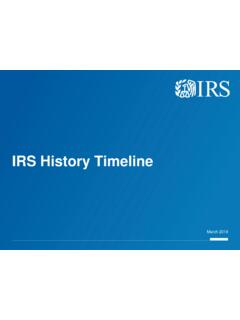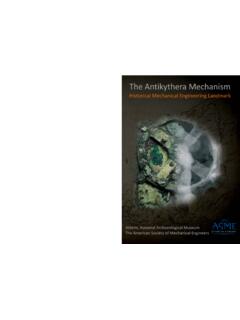Transcription of OF INSTRUCTIONAL TECHNOLOGY - ITDL
1 INTERNATIONAL JOURNAL OF INSTRUCTIONAL TECHNOLOGY AND DISTANCE LEARNING January 2015 Volume 12 Number 1 Editorial Board Donald G. Perrin Executive Editor Elizabeth Perrin Editor-in-Chief Brent Muirhead Senior Editor Muhammad Betz, Editor ISSN 1550-6908 International Journal of INSTRUCTIONAL TECHNOLOGY and Distance Learning January 2015 Vol. 12. ii PUBLISHER'S DECLARATION Research and innovation in teaching and learning are prime topics for the Journal of INSTRUCTIONAL TECHNOLOGY and Distance Learning (ISSN 1550-6908). The Journal was initiated in January 2004 to facilitate communication and collaboration among researchers, innovators, practitioners, and administrators of education and training involving innovative technologies and/or distance learning. The Journal is monthly, refereed, and global. Intellectual property rights are retained by the author(s) and a Creative Commons Copyright permits replication of articles and eBooks for education related purposes.
2 Publication is managed by DonEl Learning Inc. supported by a host of volunteer editors, referees and production staff that cross national boundaries. IJITDL is committed to publish significant writings of high academic stature for worldwide distribution to stakeholders in distance learning and TECHNOLOGY . In its first decade, the Journal published more than 600 articles; 7,500 pages of research and theory by over 1,000 authors. It logged over ten million page views and more than a million downloads of Acrobat files of monthly journals and eBooks. Many authors benefited from refereed publication for retention, promotion, tenure, and advancement in their profession Donald G. Perrin, Executive Editor Elizabeth Perrin, Editor in Chief Brent Muirhead, Senior Editor Muhammad Betz, Editor International Journal of INSTRUCTIONAL TECHNOLOGY and Distance Learning January 2015 Vol. 12. iii Vol. 12. No. 1. ISSN 1550-6908 Table of Contents January 2015 Page Editorial: Artificial Intelligence 1 Donald G.
3 Perrin The pedagogical functions of arts and cultural-heritage education with ICTs in museums a case study of FINNA and Google Art Project 3 Pei Zhao, Sara Sintonen, Heikki Kyn slahti Augmented reality 17 Katrina L. Currie and J. Courduff The role of e-learning, advantages and disadvantages of its adoption in higher education 29 Valentina Arkorful and Nelly Abaidoo Enriching professional practice with digital technologies: faculty performance indicators and training needs in Saudi higher education 43 Abdulrahman M Al-Zahrani Branding in education 57 William Callister, Katherine Blevins, Ryan Kier and Isaac Pettway Student engagement, e-connectivity, and creating relationships in the online classroom: emerging themes 65 Andree Swanson, Bill Davis, Omar Parks, Stan Atkinson, Brenda Forde and Kunsoo Choi Kindles in the classroom: a survey of teachers and their perceptions of a mandated high school kindle initiative 73 Erin Margarella and Matthew Ulyesses Blankenship International Journal of INSTRUCTIONAL TECHNOLOGY and Distance Learning January 2015 Vol.
4 12. iv Return to Table of Contents International Journal of INSTRUCTIONAL TECHNOLOGY and Distance Learning January 2015 Vol. 12. 1 Editorial Artificial Intelligence Donald G. Perrin Dr. Herbert A. Simon and Allen Newell of Carnegie Mellon University gained renown in the mid-1950s when they created the first "thinking machine" and launched the field of artificial intelligence. Both were central figures during the cognitive revolution in psychology in the 1960s as scientists began to use computer models to study human thought processes. In 1962, as a research assistant to Dr. James D. Finn on the Technological Development Project of the National Education Association, I was sent to the California Technical Institute to hear and see Professor Simon demonstrate artificial intelligence using the computer. The crowded lecture room tingled with excitement. Dr. Simon explained Turing s test to determine whether the computer response could be differentiated from a response by a human being.
5 He showed how the computer was able to make decisions and solve problems such as the following: Three missionaries and three cannibals must cross a river using a boat that can carry at most two people. For both banks, if there are missionaries present on the bank, they cannot be outnumbered by cannibals (if they were, the cannibals would eat the missionaries). The boat cannot cross the river with no people on board. Dr. Simon also demonstrated intelligent robotics to detect and pick up an egg, and chess games where different computer algorithms were compared. If the egg was detected and quickly removed, the machine went berserk in an un-programmed search for the egg. An electric shock restored the original program (was this analogous to shock treatment for a mental patient?). The algorithms for chess compared a set of simple rules vs. alternative strategies for all of the possible next three moves. Simple rules worked better than analysis of millions of potential options.
6 The audience was intensely interested and excited by these demonstrations. At question time I asked how long it took to write the program for the missionaries and cannibals. The answer was about six weeks, and two weeks to debug the program . It was not my intent to deflate an enthusiastic audience. It took some time to appreciate the tremendous step forward these experiments represented in development of artificial intelligence. Fifty years later we find artificial intelligence, robotics, and automation augmenting productivity at home, at work, and in personal and business communications. Siri listens and provides answers faster than you can google them on a keyboard. And in 2012, IBM's Deep Blue won the chess championship from Garry Kasparov. There are serious questions about what skillsets schools should teach in the future when ubiquitous mobile devices complement human intelligence and deliver customized training. Are we approaching a paradigm shift where thinking machines will play a dominant role in our daily lives and make irreversible change in the way we live?
7 _____ Herbert A. Simon Obituary: Allen Newell and Herbert A Simon. Computer simulation of human thinking. ~coulson/203 Return to Table of Contents International Journal of INSTRUCTIONAL TECHNOLOGY and Distance Learning January 2015 Vol. 12. 2 Return to Table of Contents International Journal of INSTRUCTIONAL TECHNOLOGY and Distance Learning January 2015 Vol. 12. 3 Editor's Note: In this day and age when research shows renewed importance for curricula in arts related subjects and their value in stimulating creativity, it is heartening to see new technologies to enrich access, dialog and interpretation of art and culture. It is of particular importance because budget cuts have virtually eliminated the arts from many curricula in a day and age where cultural understanding and creative problem solving are in great demand. The pedagogical functions of arts and cultural-heritage education with ICTs in museums a case study of FINNA and Google Art Project Pei Zhao, Sara Sintonen, Heikki Kyn slahti Finland Abstract Digital museums and arts galleries have become popular in museum education and management.
8 Museum and arts galleries website is one of the most effective and efficient ways. Google, a corporation specializing in Internet-related services and projects, not only puts high-resolution arts images online, but also uses augmented-reality in its digital art gallery . The Google Art Project, Google s production, provides users a platform for appreciating and learning arts. With the virtual reality, recently added to the Google Art Project, more and more countries released their own museum and art gallery websites, like British Painting in BBC, and FINNA in Finland. Pedagogical function in these websites is one of the most important functions. In this paper, we use Google Art Project and FINNA as the case studies to investigate what kinds of pedagogical functions exist in these websites. Finally, this paper will give the recommendation to digital museums and websites development, especially the pedagogical functions development, in the future.
9 Keywords: arts education, cultural-heritage education, education with ICTs, pedagogical functions. Introduction It is valuable for students and children to visit a museum or art galleries, because the learning environment is rich and dense, and more opportunities for fresh ways of thinking can occur in and out of the classroom. It enriches the school curriculum and learning experience after class, and provides an opportunity to work with an expert . Therefore, it is necessary to promote teaching and learning arts in museums, even though it is always limited by space and time. With the development of information communication technologies (ICTs), ICT environments have been challenging traditional pedagogy, and terms like student-centered approach, interactive and collaborative learning, and construction of learning environment, arise. The National Art Education Association (NAEA) 2009 stated that it is necessary to let learners increasingly combine TECHNOLOGY with artistic knowledge and skills, and the nurture contemporary visual arts education.
10 The pedagogical strategy from the Australian curriculum listed benefits that include enhancing achievement, creating new learning possibilities and extending interaction with local and global communities. The ICTs in museum teaching encompass the internet, email, and digitization. Amanda Clarke, et al. (2002) stated that technologies in museums have video, interactive smart board, web, internet, etc. Petrea Redmond (2011) illustrated the pedagogical transitions from face-to-face teaching to online teaching, based on a four-year observation that the traditional face-to-face classroom was not as effective as the online space and, in order to guarantee effective learning outcomes, more International Journal of INSTRUCTIONAL TECHNOLOGY and Distance Learning January 2015 Vol. 12. 4 activities and discussions with peers are needed. Pedagogical functions in online learning focus on reflective practices, like participant dialogues and feedback.
